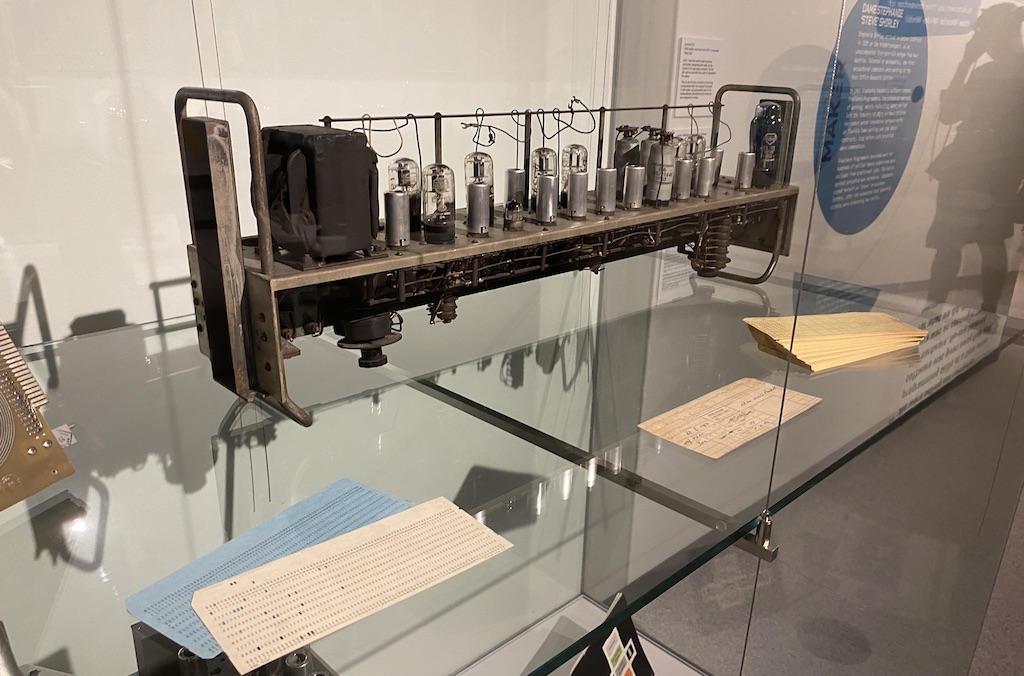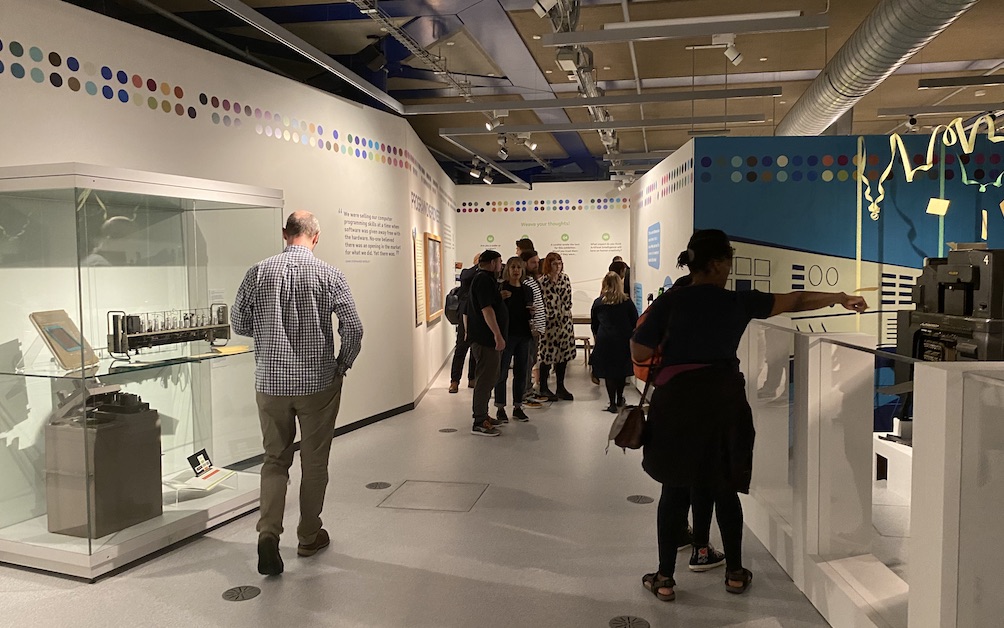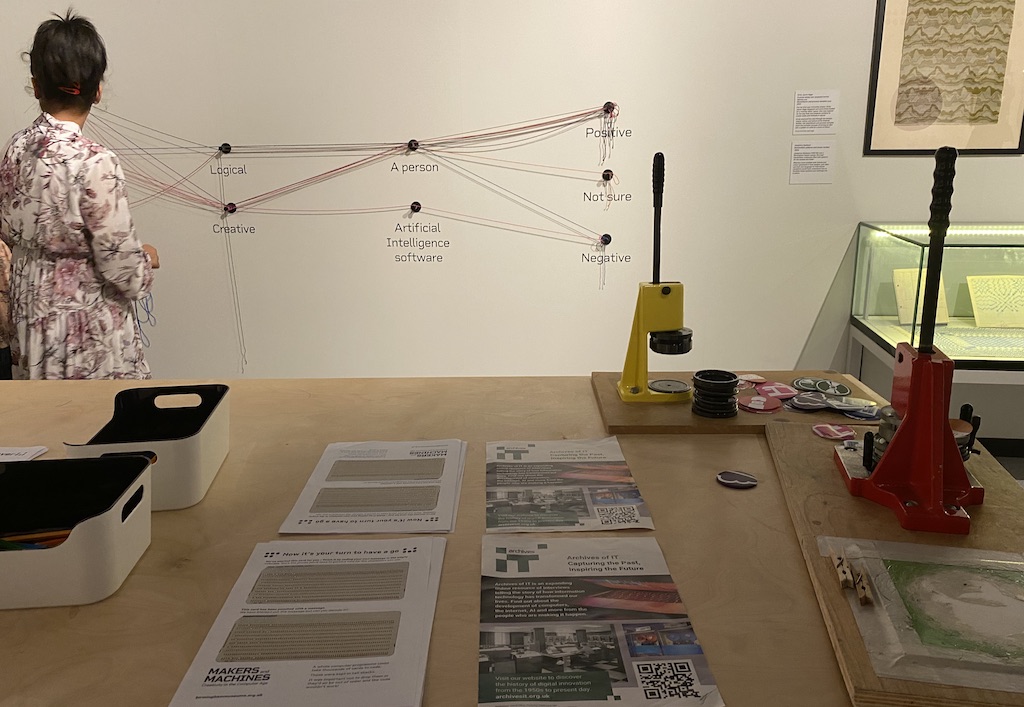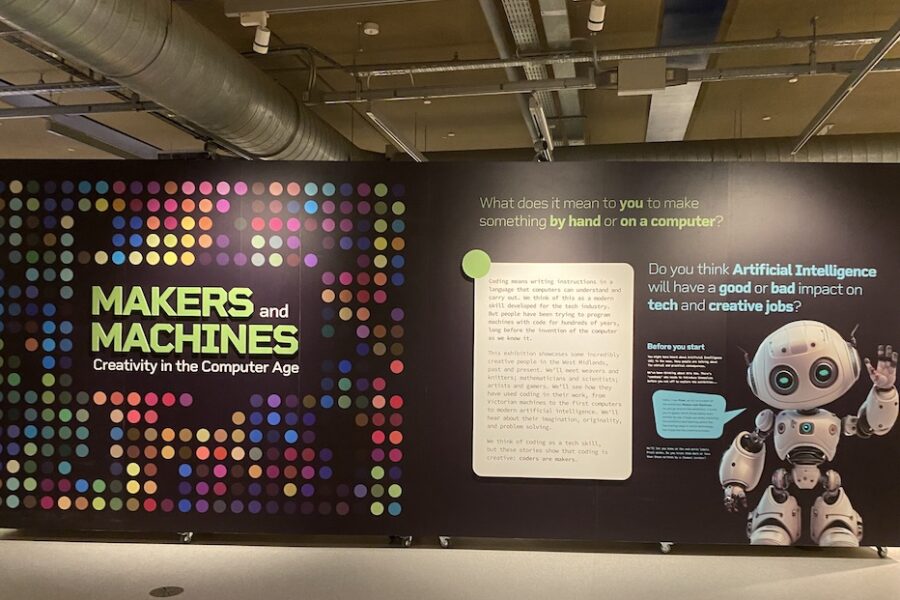Words and Photographs by Adrian Murphy
Part of Birmingham Museums Trust’s internationally significant collection of early British computers and components forms the backbone of a new exhibition at ThinkTank, Birmingham Science Museum.
The Makers and Machines: creativity in the computer age exhibition interweaves the story of these historic computers with the stories of three pioneering coders with roots in Birmingham and the wider West Midlands and many more local students, scientists and artists.
These include Kathleen Booth, originally from Stourbridge, who was a programming pioneer and invented the first assembly language. Kathleen and her husband Andrew designed the Hollerith Electronic Computer (HEC), which was built in 1951 and one of the oldest surviving electronic computers in the world.

The HEC is returning to the city from The National Museum of Computing (TNOC) in Bletchley, where it has been on long-term loan since 2015.
Birmingham Museums Trust also loaned the Harwell Dekatron Computer aka W.I.T.C.H to the TNOC in 2009. In 1951 it was one of only a handful of computers in the world and, since restoration in 2012, is the oldest original working digital computer.
The last time the HEC and other objects in the computer collection were on display in Birmingham was in 1997 when the original Birmingham Museum of Science and Industry closed its doors.
“This topic was chosen because Birmingham has an incredibly rich and internationally significant collection of early generation British computers,” says curator Felicity McWilliams.
“I wanted to get them on display and make people aware of the collection and these amazing stories. So, the inspiration for the exhibition was partly driven by the strength of the collection and the stories of the three female programmers from the 1940s to ‘60s.”
Other stories of female pioneers include Dame Stephanie Shirley (interviewed by AIT in February 2017), who arrived in Britain on the Kindertransport in 1939 and placed with foster parents in Sutton Coldfield, Birmingham.
A talented mathematician, Dame Stephanie set up her own software company, Freelance Programmers, in 1961. It was innovative in many ways, not least the idea of selling coding skills at a time when software was given away for free with computers.

She also recruited only professionally qualified women who had to leave traditional employment as a result of caregiving responsibilities, offering flexible home working and job share contracts long before such working practices became commonplace.
Dame Stephanie has loaned a selection of her punch cards to the exhibition and her 2012 memoir Let it Go is on sale in the museum shop.
The exhibition also recognises Mary Lee Berners-Lee (mother of Sir Tim Berners-Lee, inventor of the World Wide Web) who was born in Hall Green, Birmingham and became a programmer for Ferranti
As well as the HEC there is also a punch card machine used at the Cadbury factory in the Birmingham suburb of Bournville from 1951 and a display showing one of the surviving components of a LEO I and the storage unit of a Ferranti Mark I *.
Makers and Machines also looks to the modern age and encourages visitors to think about the implications of new technology such as AI for human creativity.
Visitors to this interactive exhibition will meet an AI co-curator and be invited to see if they can spot the three object labels in the exhibition which have been written by an AI chatbot rather than a human curator. Visitors will also get the opportunity to play an arcade version of Space Invaders, learn how to code on punch cards and see some of the early personal computers from the 1980s and discover personal stories from modern-day local businesses, scientists, artists and students.

“The target audience is an intergenerational family group,” says McWilliams. “And the core message is that coding and computing are extremely creative.
“School students are sometimes led to believe they have to choose between science and arts/creative subjects. What we want them to see is that industries that they might think of as STEM and technical are actually really creative. We hope that Makers and Machines breaks down the division between Stem and arts subjects.”
The exhibition is presented by Birmingham Museums Trust and supported by funding from Millennium Point Trust, which went towards creating a new temporary gallery space from a previously permamnet exhibition.

It was developed with the help of a range of local community, education and industry organisations including Birmingham City University, the Bloomsbury Hope Centre, Cash’s of Coventry, the Dorothy Parkes Centre and the Sophie Hayes Foundation.
Makers and Machines: creativity in the computer age runs at ThinkTank until 28 April 2024 and is included in the admission price.
